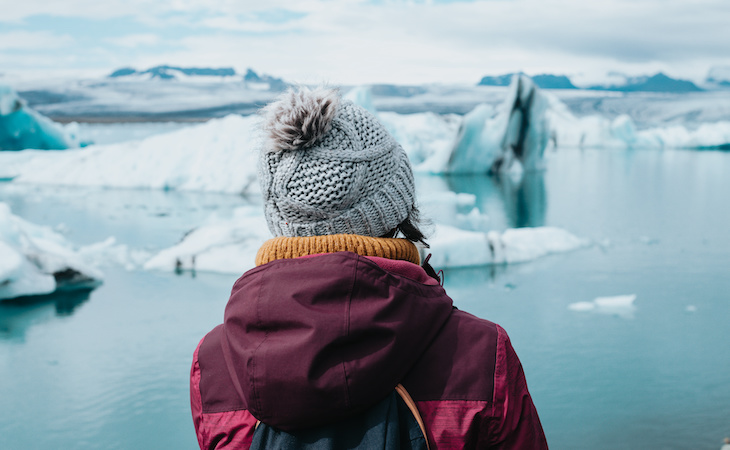Last year, I traveled to the Arctic and Antarctic Circles in the same month. I went from sleeping in Antarctica during the “midnight sun” to snoozing in Svalbard during the “polar nights”—all within 20 days.
While it was a wildly unique goal to check off my travel list, going from constant light to total darkness drastically disrupted my sleeping patterns.
With more adventurers than ever heading to the Poles on expedition cruises with companies like Seabourn and Hurtigruten, navigating sleeping in these extreme conditions has never been more important.
We spoke with a few sleep experts about ways you can keep your circadian rhythm in check and adjust to sleeping in the world’s most uncompromising regions.
Tips for sleeping better in total light and darkness
Use blackout curtains
This piece of advice is especially relevant during the midnight sun’s constant bright light. When preparing for bed, it’s important to trick your brain into thinking it’s dark outside, so blackout curtains or a thick, comfortable

Blocks out light for restful sleep while protecting the delicate skin around the eyes
are crucial for getting and staying asleep.
Create a consistent routine
Residents subject to polar nights swear by this one, and Mollie Eastman, creator of Sleep Is A Skill and the host of The Sleep Is A Skill Podcast, agrees.
“Consistency in sleep and wake times is crucial for reinforcing the body’s internal clock, underscoring the importance of viewing sleep as a skill that can be honed and improved,” she says.
So, try to get to bed at the same time every night and set your alarm for the same time every morning. Your body will thank you for it.
Expose yourself to light in the morning
During the harsh polar nights, Daniel Gartenberg, PhD, CEO of SleepSpace, says this: “One study showed that the circadian cycle is both delayed and weaker, preventing the body from knowing when to be alert and when to be asleep. As a result, all the key measures of sleep are negatively impacted. This includes sleep quality, sleep efficacy, sleep duration, and sleep onset latency.”
To help combat this, he recommends exposing yourself to an hour pulse of light in the morning before you begin your day. Researchers at the Stanford University School of Medicine have found that short flashes of light are effective in treating circadian rhythm disruptions.
Utilize red light therapy at night
When it’s pitch black 24/7, our bodies crave natural sunlight. “Utilizing bright light therapy during the day can simulate the natural sunlight missing during polar nights,” Eastman says.
She recommends using red light therapy in the evening. “Mimicking the natural red hues of sunrise and sunset, red light therapy supports the body’s preparation for sleep and wakefulness without interfering with melatonin production,” she says. “This dual approach helps maintain a natural rhythm in the absence of traditional daylight cues.”
Partake in physical activity
Exercise can help boost serotonin and dopamine, helpful with the effects of Seasonal Affective Disorder (SAD) common in continuous darkness.
“Increasing physical activity is a great strategy for sleep in general because it really boosts your drive for sleep,” says Shantha Gowda, PsyD, founder of Think Sleep. “It would be especially important when there is minimal sunlight throughout the day because people tend to lean towards more sedentary activities in darkness.”
Try natural sleep supplements
If nothing seems to be helping you get a restful night’s sleep, Gartenberg suggests taking a natural melatonin tablet before bed. Another option is to spray your pillow with lavender mist or sniff lavender essential oils before settling into the sheets.
Engage in mindfulness practices
Calm and relaxation are the best state of mind before bedtime. When sleeping in extreme environments, Eastman recommends practicing mindfulness techniques like meditation, deep breathing, or yoga to “help in reducing stress and preparing the body for sleep.”
FAQs
Is there a place that stays dark all the time?
Yes, parts of Arctic countries like Svalbard, Norway, Greenland, Canada, Sweden, and Finland experience total darkness during the polar nights.
Is there a place where there is always light?
Yes, the same countries that experience polar nights also experience the midnight sun. The continent of Antarctica and parts of Alaska also experience both.
Is it hard to sleep in Antarctica?
Sleeping in Antarctica can be hard! Travelers can only visit during the summer when the sun never sets, but our tips above will help manage your sleep.
Next, read our Q&A with a professional adventurer for more travel sleep tips.




